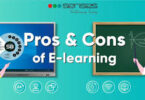10 Innovative Teaching Methods Transforming Modern Education
Education has evolved dramatically over the years, driven by technological advancements, innovative pedagogical practices, and a growing understanding of diverse learning styles. Modern teaching methods aim to foster creativity, critical thinking, and active engagement among students. Here are ten innovative teaching approaches that are reshaping contemporary education.
1. Flipped Classroom
The flipped classroom model reverses the traditional teaching structure. Instead of learning new concepts in class and doing homework at home, students watch video lectures or study materials outside of class time. Classroom sessions are then used for discussions, problem-solving, and hands-on activities. This method promotes active learning and allows teachers to provide personalized guidance.
Benefits:
- Encourages student-centered learning.
- Enhances understanding through collaborative activities.
- Frees up classroom time for deeper engagement.
2. Gamification in Learning
Gamification integrates game elements into the learning process to boost motivation and engagement. This approach includes point systems, leaderboards, badges, and interactive tasks. By tapping into students’ competitive and playful nature, gamification makes learning enjoyable and effective.
Benefits:
- Improves participation and enthusiasm.
- Strengthens retention of knowledge.
- Builds teamwork and problem-solving skills.
3. Project-Based Learning (PBL)
PBL encourages students to work on real-world projects that require critical thinking, creativity, and collaboration. Teachers guide students as they tackle complex questions or challenges, culminating in tangible outcomes such as presentations or prototypes.
Benefits:
- Connects academic concepts with practical applications.
- Develops essential life skills like collaboration and decision-making.
- Fosters a deeper understanding of subject matter.
4. Hybrid or Blended Learning
Blended learning combines face-to-face instruction with online resources and self-paced learning. This flexible model allows students to benefit from personalized online content while still engaging in traditional classroom interactions.
Benefits:
- Caters to diverse learning preferences.
- Enhances accessibility and flexibility.
- Provides a balanced approach to teaching.
5. Personalized Learning
Personalized learning tailors educational experiences to individual student needs, interests, and learning paces. Technology often plays a key role in this method, with adaptive learning platforms providing customized content.
Benefits:
- Addresses unique learning gaps.
- Promotes student autonomy.
- Improves academic outcomes through targeted interventions.
6. Inquiry-Based Learning
This student-centered approach emphasizes questioning, investigation, and problem-solving. Students are encouraged to ask questions, conduct research, and draw conclusions, making them active participants in their learning journey.
Benefits:
- Sparks curiosity and creativity.
- Develops critical thinking skills.
- Encourages lifelong learning habits.
7. Collaborative Learning
Collaborative learning involves group activities where students work together to achieve shared goals. This method fosters peer-to-peer learning and emphasizes the importance of teamwork.
Benefits:
- Strengthens communication and social skills.
- Encourages diverse perspectives.
- Builds a sense of community within the classroom.
8. STEAM Education
STEAM (Science, Technology, Engineering, Arts, and Mathematics) education integrates arts with traditional STEM subjects. This interdisciplinary approach encourages creativity, innovation, and holistic problem-solving.
Benefits:
- Nurtures innovation and creativity.
- Prepares students for future careers.
- Promotes a well-rounded education.
9. Competency-Based Education (CBE)
CBE focuses on students mastering specific skills or competencies at their own pace. This approach shifts the emphasis from seat time to demonstrated proficiency, allowing learners to progress as soon as they’re ready.
Benefits:
- Customizes learning pathways.
- Encourages mastery of content.
- Reduces learning gaps.
10. Experiential Learning
Experiential learning emphasizes hands-on experiences, such as internships, simulations, and fieldwork. Students learn by doing, reflecting on their experiences, and applying their insights to new situations.
Benefits:
- Enhances practical knowledge.
- Builds real-world problem-solving abilities.
- Strengthens critical thinking and adaptability.
Conclusion
These innovative teaching methods are transforming education by focusing on student engagement, real-world relevance, and individualized learning. By adopting these approaches, educators can better equip students with the skills and knowledge needed to thrive in a rapidly changing world. As education continues to evolve, these methods will play a vital role in shaping the future of learning.










Leave a Comment